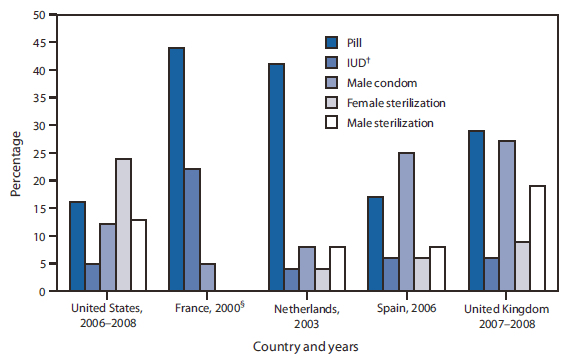* France, the Netherlands, Spain, and the United Kingdom. These countries were selected because they have birth rates and abortion rates lower than the United States and because they have comparable data on contraception among married women from a large national survey. Data are from a United Nations compilation of national survey data. Results are based on large samples and are adjusted to national totals in each country. Additional information is available at http://www.cdc.gov/nchs/data/series/sr_23/sr23_029.pdf. Low fertility is defined as a total fertility rate (TFR) of ≤2.1. TFR is the average number of births per woman, based on current age-specific birth rates. In 2006, the TFR in the United States was approximately 2.1 children per woman A TFR of 2.1 is the replacement value of a population (i.e., the rate, without migration, at which the number of persons in a population would be stable).
† Intrauterine device.
§ Data not available on use of male and female sterilization in France in 2000.
 ShareCompartir
ShareCompartir



